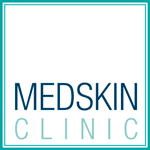FREE Consultation 0330 043 9943

Skin tag Removal Guildford
Looking for Skin tag Removal Guildford
Skin Tag Removal Guildford – At MedSkin Skin Tag Removal Guildford Clinic, we pride ourselves on providing exemplary care for widespread skin issues such as moles, milia, and particularly, skin tags, which often lead to significant discomfort and a sense of self-consciousness for numerous individuals. Ideally located for those in Guildford and nearby, our celebrated skin tag removal service proficiently addresses these dermatological concerns.
Skin tags, which are frequently mistaken for warts, tend to be benign and pain-free skin outgrowths. Unlike warts, which are infectious and prone to spreading, the removal of skin tags necessitates specialist knowledge.
These harmless lumps can manifest around the neck, armpits, below the breasts, in the groin area, on the eyelids, or even on the buttocks. Though not dangerous, skin tags can be aggravated by clothing or jewellery, making them unattractive, and for many, a source of embarrassment or increased self-awareness.
Identifying a skin tag from a wart is crucial; skin tags usually appear smooth and soft, extending from the skin, in contrast to warts which are grainy in texture and level with the skin. Skin tags often appear alone and are not contagious, unlike warts that may group together and spread.
Milia are small, white, keratin-filled cysts that typically develop around the eyes and nose area on the face. They’re mostly harmless but might necessitate removal if persistent or bothersome.
What Treatment Suits You Best?
Our Skin Tag Removal Guildford Clinic is pleased to offer an assortment of effective techniques for the safe removal of milia, moles, and skin tags. We dedicate ourselves to determining the most appropriate treatment option for each individual case.
A prime treatment we offer is the CryoPen therapy, an innovative, minimally intrusive method employing liquid nitrogen to freeze and subsequently eradicate skin lesions with precision. This procedure, executed by our skilled practitioners, involves the use of a precision tool for the direct application of liquid nitrogen to the lesion, thus accurately targeting the problem area whilst preserving the surrounding healthy skin. The lesion then undergoes freezing and naturally separates over a few weeks.
At Skin Tag Removal Guildford, our goal extends beyond merely providing treatments; we are committed to furnishing advice and support throughout your skincare journey. Our experts are fervent about delivering custom advice and care, ensuring a seamless, safe, and individualized treatment experience.
Selecting the correct treatment strategy is crucial, and at Skin Tag Removal Guildford, we stand ready to address any questions concerning our services. Whether it involves the removal of an irritating skin tag, treatment for milia, or mole excision, our team prioritizes your health, safety, and satisfaction.
Your wellness, comfort, and contentment are paramount at the Skin Tag Removal Guildford Clinic.
Should you need more information or wish to schedule an appointment, please don’t hesitate to reach out to us via phone or our contact form. A member of the Skin Tag Removal Guildford nursing team will gladly assist you.
Fill this Form to connect via SMS
What does Skin Tag Removal Treatment Involve?
What is a Skin Tag
A skin tag is a small, soft piece of skin that sticks out on a thin stalk. They’re common and harmless and can appear anywhere on the body. People often find them on the neck, underarms, around the groin, or under the breasts. Skin tags are made of loose collagen fibers and blood vessels surrounded by skin. They’re more common in older adults, people with certain health conditions, or those who are overweight. Skin tags don’t usually cause pain or discomfort, but they can be annoying. If someone doesn’t like how a skin tag looks or if it’s irritating, all skin tags can easily be removed.

Skin Tag Removal Guildford Questions

What exactly are skin tags, and how do they form?
Skin tags are diminutive, non-cancerous protrusions that frequently emerge on parts of the body where skin comes into contact with other skin or clothes. They are usually without pain and not harmful, though at times they may lead to irritation or unease if they snag on clothing or Jewellery.
When is it advised to remove skin tags?
The recommendation for removing skin tags often arises for aesthetic reasons or if the tags lead to discomfort because of their position or size. Although skin tags are typically benign, their removal might be deemed necessary if they become irritated, start to bleed, or if there’s concern they might indicate a more grave health issue.
There could be many reasons why you’d want to remove a cyst. Common reasons may include disliking its appearance, experiencing discomfort due to its size or location (such as when brushing your hair, wearing certain clothes or Jewellery, or shaving), inflammation, the sudden growth of the cyst, its tenderness or itchiness, or if it has burst, leaked, developed an abscess. As they grow larger, cysts are likelier to rupture and cause discomfort, making earlier removal when they’re smaller much simpler.
What are the various techniques for removing skin tags?
Excision
Excision is the process of removing the skin tag using a scalpel or scissors after applying a local anaesthetic to numb the area. This technique is particularly effective for removing larger skin tags or those in delicate areas.
Cryotherapy
Cryotherapy entails the application of liquid nitrogen to freeze the skin tag, leading it to detach over time. Suitable for smaller skin tags, this approach might necessitate several sessions to achieve full removal.
Ligation
Ligation involves constricting the base of the skin tag with a piece of thread or suture, thus halting its blood flow and causing it to eventually drop off. While less frequently employed, this technique can be effective for larger tags.
What can patients anticipate during a skin tag removal process?
Consultation
Prior to the procedure, patients will undergo a consultation with their healthcare practitioner to discuss the most suitable method for removal, along with any potential risks or complications that may arise.
Procedure
Throughout the procedure, the surrounding area of the skin tag will be cleansed, and local anaesthetic might be administered to desensitise the area. Subsequently, the chosen method for removing the skin tag will be conducted, leading to the removal of the skin tag.
Aftercare
Following the procedure, it’s common for patients to experience slight discomfort or redness at the site of removal. You will receive instructions to maintain the area clean and dry and to refrain from touching or aggravating the area.
While removing skin tags is predominantly safe, several risks and potential complications should be considered, such as:
Bleeding: There can be some bleeding during or following the procedure, notably with methods like excision.
Infection: The area where the skin tag was removed is at risk of infection, especially if the aftercare guidelines are not adhered to properly.
Scarring: There is a possibility of scarring at the site of removal, particularly with techniques such as excision or if the site is not cared for appropriately after the procedure.
The time it takes to recover after having a skin tag removed can differ based on the removal technique used and the individual’s capacity for healing. Typically, most patients may find that the area will heal in anything from a few days to a couple of weeks. Adhering to any aftercare guidance given by the healthcare professional is crucial to ensure a smooth healing process and to reduce the likelihood of any complications.
The removal of skin tags is a routine and generally straightforward procedure that can enhance both physical comfort and self-esteem. By gaining knowledge about the various methods of removal, understanding potential risks, and comprehending the aftercare necessities, patients can make informed choices regarding their skin health and welfare. If you have any issues about skin tags or if you’re contemplating having them removed, it’s advisable to seek tailored advice and treatment options from your healthcare provider.
We also offer Wart Removal

Book your free consultation now
We provide FREE, no-obligation consultations at our clinics to discuss your goals and to explore your treatment options.
